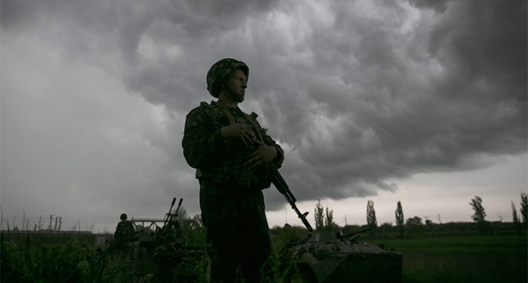 Ukraine’s escalated violence over the past four days is just the event that seems likely to trigger the full-scale invasion of Ukraine by the Russian ground forces massed near its eastern border. Indeed, following the Ukrainian army’s counter-attack against Russian-backed separatists around the eastern Ukrainian city of Slaviansk, and the weekend fighting in the seaport city of Odessa, Russian President Vladimir Putin is under heightened pressure of his own making to launch the invasion, note the prominent US scholar of Eurasia, Paul Goble, and Russian dissident blogger Oleg Kozyrev.
Ukraine’s escalated violence over the past four days is just the event that seems likely to trigger the full-scale invasion of Ukraine by the Russian ground forces massed near its eastern border. Indeed, following the Ukrainian army’s counter-attack against Russian-backed separatists around the eastern Ukrainian city of Slaviansk, and the weekend fighting in the seaport city of Odessa, Russian President Vladimir Putin is under heightened pressure of his own making to launch the invasion, note the prominent US scholar of Eurasia, Paul Goble, and Russian dissident blogger Oleg Kozyrev.
After months in which his government has blared warnings across all Russian media about the dangers of “fascists” it says have seized power and attacked Russians in Ukraine, Putin has marched into a political tupik, a “blind alley” in which he may have no good policy choices, according to Kozyrev. “If Putin does not introduce forces after all this hysteria in the media, he will have betrayed those who placed their hopes in him,” Kozyrev wrote over the weekend on the independent Russian news website Kasparov.ru. “The disappointment of the Putinists will be strong both in the eastern portion of Ukraine and in Russia itself.”
Already before the weekend’s violence, Russia faced military pressures to invade quickly or not at all, including its schedule for mustering out its most experienced conscript soldiers. “The window of opportunity for an invasion will open during the first weeks of April and close somewhere around the middle of May,” the prominent Russian military analyst Pavel Felgengauer noted in late March. Other analysts have noted the advantage to Russia of invading before May 25 if that step seems the best way to disrupt Ukraine’s presidential election, with its potential to strengthen and legitimize the government in Kyiv.
The pro-Russian separatists of eastern Ukraine, who have declared their “Donetsk People’s Republic,” have vowed to hold a referendum Sunday (May 11) on whether to secede from Ukraine. In its armed seizure of Crimea in February, Moscow seemed to attach some value to following the legalistic niceties of a referendum and a Crimean parliamentary appeal for Russian annexation.. If it values them as much in eastern Ukraine, it will hesitate to invade before the show of the Sunday plebiscite. The window estimated earlier by Felgengauer will be soon to close, and Moscow will then have only two weeks left in which to disrupt the Ukrainian vote.
“Regardless of which choice he makes – and at least up to now it is his choice – Putin will face problems at home,” Goble wrote yesterday on his blog. “If he does not introduce troops, he will face a population whose anger he has whipped up and will have to find a new outlet for that either at home or, more likely, abroad lest that anger be turned on himself.”
If Putin does launch the invasion, “he will face another set of problems although they may not seem as immediate to the Kremlin leader,” Goble wrote. “There will be initial enthusiasm for the use of force, but as the costs both in the form of Russian casualties and from Western sanctions become clear, that will dissipate and ever more Russians will question his strategy.”
Michael McFaul, until February the US ambassador in Moscow, and former US National Security Advisor Zbigniew Brzezinski predicted last week that a Russian invasion likely would lead to years of urban guerrilla warfare by Ukrainians – something “very costly for Russia,” McFaul told Time. And, Brzezinski said, a war that the Ukrainians, if supplied weapons by the West, would eventually win.
McFaul credited Putin with some realistic notion of the stakes, saying that such an invasion is “not something one does lightly. But it got a lot more likely” with the weekend violence.
James Rupert is managing editor at the Atlantic Council.
Image: A Ukrainian soldier stands at a checkpoint near the town of Slaviansk in eastern Ukraine May 2, 2014. REUTERS/Baz Ratner

